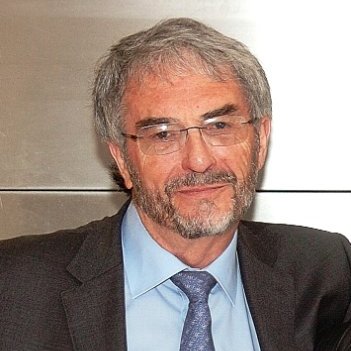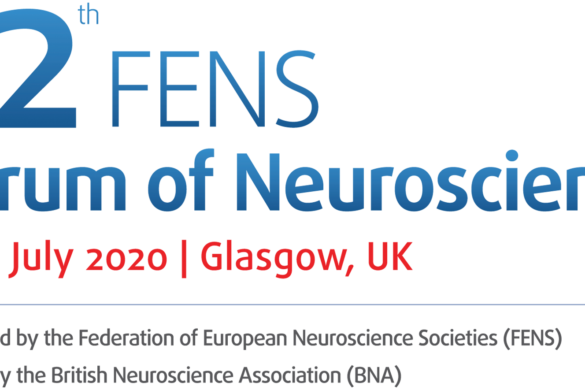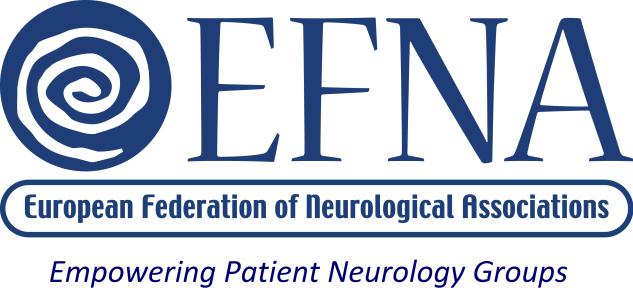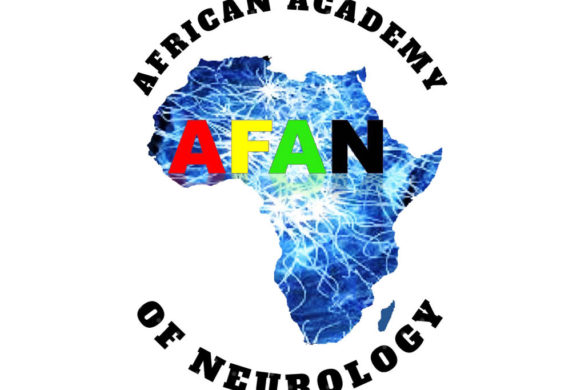
Mrs. Ann Little, President of EFNA, interviews Mr. Alistair Newton winner of the 2016 EFNA Patient Advocacy award.
Ann Little (AL): Alistair, congratulations on winning an EFNA Neurology Advocacy Award in the Patient Advocate category. Can you tell us when, how and why you became involved in patient advocacy?
Alistair Newton (AN): Thank you. It is an honour to have been chosen for this award, especially as I was part of the ‘core’ team of the EFNA Board during its formation and through its first decade. In turn, I congratulate the current EFNA leadership on its successes and excellent development since then.
I became involved in patient advocacy more than thirty years ago, when I eventually found a movement disorder specialist who was able to diagnose the bizarre and debilitating spasms in my neck muscles, and give it a name – cervical dystonia! Until then, while living a very busy and fairly healthy life, I had not realised that many ill people need support in ways which even the best healthcare services cannot provide. I soon became involved in the work of the recently-formed Dystonia Society in the UK. Patient advocacy in those days was a very new concept, and groups struggled to achieve the necessary credibility which would allow the collective views and needs of patients being heard and taken into account. I soon expanded my approach from basic ‘patient support’, good-quality information and spreading awareness of the existence of the illness, to ‘patient advocacy’, influencing health policy and practice at national, regional and local levels.
AL: Your work in advocating for dystonia patients has extended into your involvement in the wider neurology world. Could you tell us why you feel that it is important to work beyond your individual disease area of interest, and also beyond national borders?
AN: To be able to influence others, we must have credibility. This usually means having a professional approach, high quality performance in activities and partnerships, strength and stability. The first approach in patient advocacy is often with national collaborations in other disease areas, and creating strong links with the medical profession. But the main aim should be to attract attention and support from policymakers at all relevant levels – including Brussels. Any activity at the European level must include representation from other European countries. This is why we formed a Pan-European organisation, Dystonia Europe, in 1993. Then we started the important work of building links with international neurological organisations and the specialists who were interested in international co-operation.
From that beginning, we were well-placed to play one of the central roles in the establishment of EFNA (2000) and, in 2003, in the European Brain Council (EBC). Both were initiatives of the EFNS Past President, Prof Jes Olesen, and his vision of creating over-arching collaborations of all ‘stakeholders’ met the emerging expectations of EC policymakers. The many successes of EFNA and EBC have substantially raised the importance and status of neurological illness in the planning and policy of the European Union Institutions. In this, the EFNS/EAN have played a very important role. I am very pleased to have been a part of that ‘new dawn’.
AL: You have been involved in patient advocacy for a long time. What have been the major changes that you have seen in this field? Do you feel that these have been positive or negative?
AN: When I first became involved, it was not known as ‘patient advocacy’! Probably because the work was mostly at the level of ‘patient support’: accurate information; a proper diagnosis; treatments; etc. The concept of speaking on behalf of patients, perhaps even influencing the ways in which the healthcare system dealt with them – that took some years to develop. The professionalising of patient advocacy organisations had yet to come. Thirty years ago, questioning by non-medical people of existing healthcare policy and practice tended to receive a negative response. The concept of including the patient in discussions on treatment was rarely considered. However, these began to be seen as potentially beneficial for the outcome of the illness. Patients, patient organisations, clinicians and policymakers started to forge much better links with one another. Nowadays, patients are more likely to be involved in the treatment decision-making and, when good cases for change are made by experienced and competent patient advocacy bodies, they receive proper consideration.
Now, we can expect much more balanced partnerships among the ‘stakeholders’. Not necessarily always an equal partnership, but one with accepted rights and responsibilities on all sides. These advances have led to much better-informed discussion, a more dignified and courteous approach to patients in healthcare systems, better patient advocacy and more openness to forming useful partnerships. I see them as very positive improvements over the past 30 years.
AL: As a person affected by Dystonia and also a very active and successful patient advocate, how important do you feel the relationship between patient organisations and their equivalent health professional partners would be in improving the lives of all patient living with dystonia and other neurological disorders?
AN: The relationship between patients and their health professionals is crucial, and lies at the heart of effective illness management. It is based on the professional medical expertise, acknowledged by the patient, while the patient’s concerns, experiences and realities of life outside the clinic are heard and properly taken into account in joint decisions. This description seems also to apply neatly to the relationship between patient organisations and their equivalent health professional partners. Effective illness management is the key to improving patients’ lives. Effectiveness can, of course, be influenced by matters beyond the control of either or both partners. For instance, the medical/scientific professional organisations often have tremendous influence with policymakers – by virtue of their great professionalism and scientific knowledge. But patient organisations, representing citizens, are sometimes more effective in achieving improvements in healthcare policy or resources – or are able to add some useful non-scientific points to a joint proposal or grant application, to bring a successful conclusion.
With a clear view of the common goal, and understanding of the most appropriate balance in each partnership, we are more likely to improve the lives of patients living with dystonia and other neurological illnesses.
AL: What is your biggest hope for the future in terms of the outcomes of effective patient advocacy?
AN: My greatest ambition for patient advocacy is that the changes in the balance of the patient/doctor and patient group/medical organisation relationships over the past thirty years will continue to develop very positively. As patient advocacy continues to become more professional, it will also become more effective and be more respected by potential partners. This will, in turn, strengthen these relationships/partnerships.
By continuing to appreciate the main goal of any partnership, and applying the increasing strengths and capabilities of the partnership’s members, the ratio of success in joint projects and proposals should also increase.
But the most important point of all is that, by continuing in this positive way, we will eventually improve the outcomes of effective illness management, for the benefit of people living with neurological illness.








